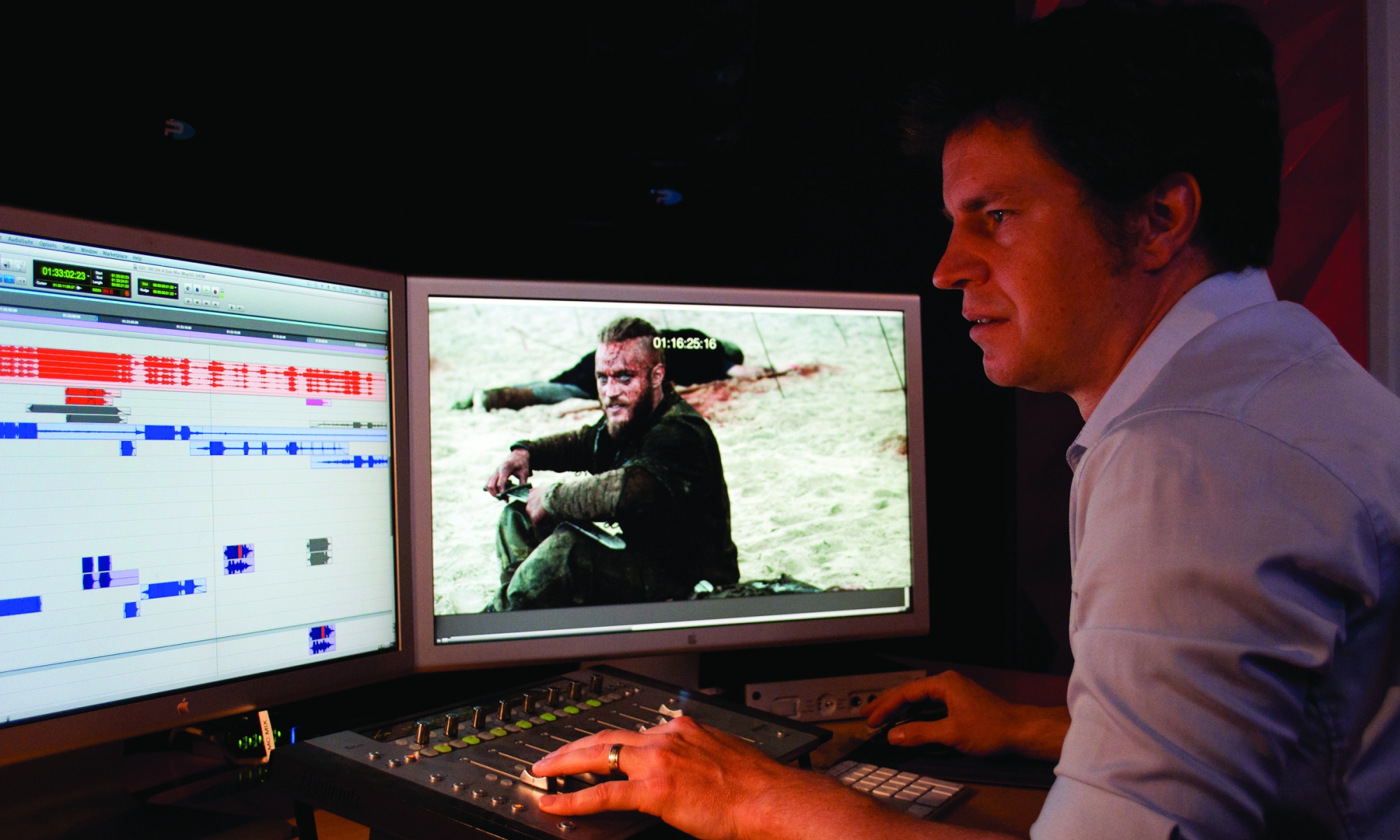Thomas J. McLean is an AwardsLine contributor. This story appeared in the June 5 issue of AwardsLine.
For sound editors and mixers, the broadening of TV’s audio palette into feature-film territory requires a lot of work and more than a handful of tricks to get shows to sound as good as they look on tight budgets and even tighter schedules.
“I spend quite a bit of time trying to find the right people who can do feature-quality work but not take feature time,” says Tim Kimmel, supervising sound editor on HBO’s epic fantasy series Game of Thrones.
With 10 hour-long episodes to complete in about five months and a tight schedule on the production pipeline, work often continues until the last minute. “By the time we finish mixing the show, we’re still waiting on final visual effects, so we will end up going back into episodes that were basically completed,” Kimmel explains.
AMC’s The Walking Dead is the first TV series that supervising sound editor Jerry Ross has worked on in a three-decade feature-film career. He came up with a library of high-quality sound effects that the picture editors could cut into scenes as they work.
Ross says it helps to have sounds in a show early because everyone grows accustomed to them. “The sounds that everyone gets used to tend to be the ones people like to keep in the show,” explains Ross. “The alternative would be to start from scratch and build all of these new sounds in there, and then everyone would go, ‘What happened to the thing I was used to?’”
Detailed environment sounds have come to the forefront. On History’s Vikings, sound designer Jane Tattersall is tasked with using sound to help make the footage shot on location in Ireland appear authentically Scandinavian.
“There is nothing in Ireland other than the actual dialogue they’re recording that is all that useful for us, because they have a different landscape, fatter hills, and it’s more rural and softer,” says Tattersall. “We did get some location sound from Norway—it’s much wetter and harsher, and the birds are different.”
The Walking Dead has similar issues for a completely different reason: No cars, planes or other technological background noises exist in the post-zombie apocalypse. “We have to clean them out and exorcise any kind of civilized sounds,” Ross says.
Of course, there also are zombie sounds to create—all of which are done in post. Ross says they incorporate zombie sounds from a handful of “zombie specialists” who come in and record vocals customized for particular zombies. To that, Ross and his crew add effects to enhance the groaning and flesh-ripping sounds.

The latter effect has a special ingredient in the form of Ross’ business partner Skip Lievsay’s dog, Dave. “When zombies are feeding, we’ll sometimes include recordings of Dave the dog, who, when you wrestle with him, makes some wonderful, gnarly kind of gross sounds,” says Ross. “We’ll take them and slow them down and add Bengal tigers eating and other kinds of animal sounds on top of the zombie sounds we create with our zombie talent.”
Creatures and fictional languages provide stimulating challenges for Kimmel. He uses a similar technique in using actors to evolve established effects and inject emotion into the sounds created for dragons and other creatures seen in Game of Thrones. “With a human element, you can try to direct and find some different emotions for these creatures,” says Kimmel.
Battles also are a challenge to put together quickly. “You need peaks and valleys, as we call it, to make specific sounds stick out and to try to find that fine detail,” Kimmel adds.
Additional dialogue recording is an unavoidable fact of life for shows shooting on location, but it’s kept to a minimum and done as efficiently as possible.
On Vikings, dialogue editor David McCallum says accents and dialects create logistical challenges. He works closely with ADR supervisor Dale Sheldrake, who travels to the international cast members and records lines for up to four episodes at a time. “We need to cross-reference pronunciations and make sure we are on top of how the actors are speaking,” McCallum says.
The final hurdles are some of the most difficult. Each viewer has a different audio setup, from surround sound to small built-in TV speakers. Moreover, the audio specs used by each network and cable or satellite system are different.
“Meeting those numbers and still trying to have the dynamics of feature-film sound, there are little corners that have to be cut,” says Kimmel. “We lose a little bit of the dynamics, so we try to cheat it as much as we can.”

